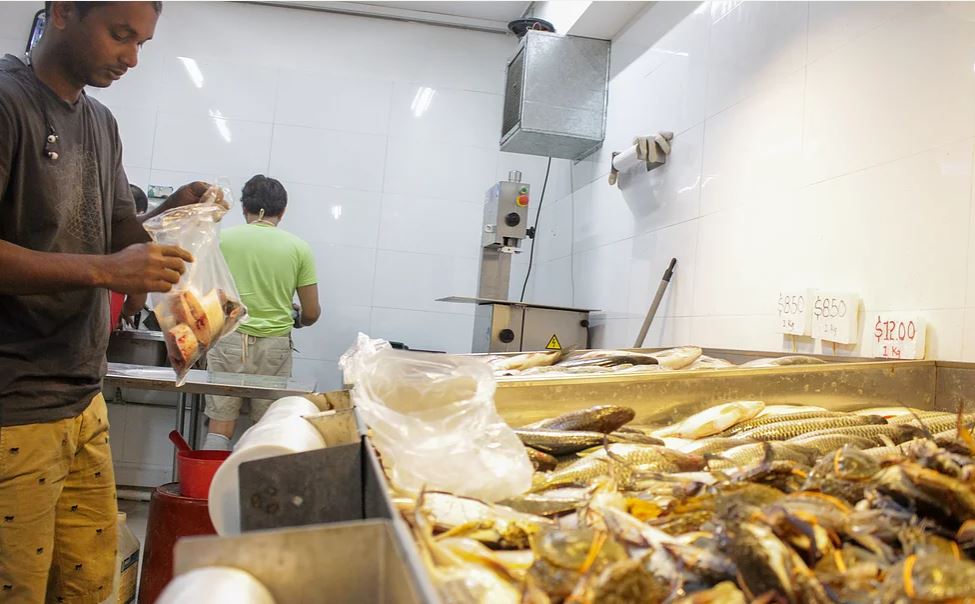Where Migrant Workers LIVE. EAT. PLAY.
- Ameera Fawzee

- Nov 15, 2016
- 3 min read
S ingapore has a total of 1.4 million migrant workers who build homes, offices, hospitals and schools. Housing them is not a simple matter. There are reports of workers living in bin centres and those who end up in cramped, poor conditions. Many others are also housed in dormitories, which are purpose-built to take care of migrant worker needs. We visit one such dormitory and find that it is a little city within the city.
The smell of curry starts to linger as dinner time is approaching. As soon as it hits 7 p.m., the dormitory’s entrance is packed with workers waiting for their turn to have their face scanned - a strict security protocol to ensure non-residents don’t get through. Chatter filled the air as they conversed with one another after a long day at work.
“Lai, lai, cheap stuff, cheap fruits, lai!” A guy selling electronics could be heard shouting from the distance. It is mixed with shoutings from the vendors selling fresh fruits. Workers stood in line to wait, after having parked their bicycles or get off the lorry they were on. Occasionally, one or two workers were called up to have their bags checked by security guards stationed beside the dormitory entrance.
This is the daily evening routine for 4100 workers living in Westlite Dormitory in Woodlands which has been in operation for two years.
LIVE
There have been efforts to improve the living conditions of migrant workers. From having to live in on-site containers converted into houses and no basic facilities for workers, Ministry of Manpower (MOM), have come up with new regulations to ensure that the migrant workers get the basic needs they deserve. “With MOM’s new regulations, these will soon be removed and license for houses with cramped conditions will not be renewed,” said Mr K.Dave, Manager of Woodlands Westlite Dormitory.
On top of improving the living conditions of migrant workers, the government is also stepping up efforts to prevent riots from happening after the Little India riot in 2013. The workers are not allowed to bring in any contraband cigarettes, alcoholic drinks, drugs or weapons into the dormitory premises. If they do, the workers will be imposed a fine and their employers have to be called in. “Once they drink, they can’t take care of themselves and will start a fight. We maintain a close rapport with residents so they can help us if there is trouble,” said Mr Dave.
EAT
Other dormitories have a shared common cooking space with everyone living in the dormitory. More often than not, overcrowding happens and workers are not able to cook their meals or eat in time for work as they are just too many people and they have to resort to buying packet rice with dhal outside. “Last time, there were 20 people. I have to queue for showering and cooking. We all have to share but now is easier,” said 28-year-old Nankumar, a foreign worker who works as a painter and have been staying in Singapore for 10 years.
PLAY
Westlite Dormitory conducts activities such as cricket competitions and Singapore Zoo and Marina Bay Sands. These allow the workers to have fun and relax on their off days after working so hard for the week.
Overseas trips are also available for the migrant workers and these trips are conducted annually. They usually happens over the long Chinese New Year holiday break and they go for short trips over the causeway. “Most of the engagement programs, activities/events with residents are at no cost or minimal charges,” said Mr Dave.
According to Transient Workers Count Too (TWC2), migrant workers in Singapore do not receive proper care and some of them are being mistreated by their employers. These employers do not provide proper living conditions for the workers – cramped dormitory rooms, minimal facilities for recreational purposes, lack of basic daily necessities and etc.
In 2007, it has been reported by The Straits Times that migrant workers lived in cramped quarters and this have been the reason that they make up more than a third of dengue cases. Just last year, 36 out of 41 confirmed cases of the Zika virus are migrant workers. This often leads to a stereotype where locals think that all migrant workers live in bad living conditions.
Over the years, the ideal living conditions for migrant workers have become a pressing issue for the government. With over 1.4 million workers in Singapore, the government have to house these workers and ensure that the living conditions are humane and at the same time, prevent riots from happening that could destabilise the harmony in Singapore. Westlite Dormitory is one of the first steps from government's efforts to house all 1.4 million and other employers and dormitories should take them as an example to create a better living environment for the workers.

































Comments